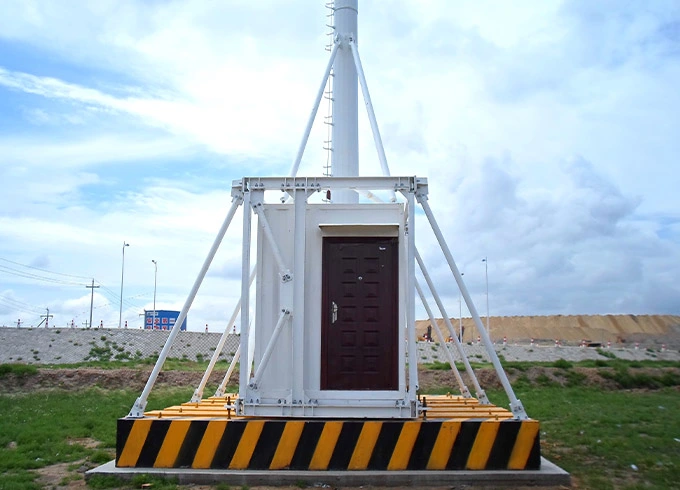220 KV transmission line towers are engineered for long-distance, high-capacity power transmission, forming the critical backbone of modern electrical grids. These heavy-duty lattice steel (or monopole/concrete) structures enable efficient 220-kilovolt power distribution across substations, wind farms, and industrial corridors, with minimal line losses. Our 220 KV transmission towers comply with Chinese GB standards, and are designed for extreme weather resilience while ensuring 30+ years of structural integrity with hot-dip galvanized corrosion protection.
| Voltage | 220KV |
| Tower Type | Suspension Tower, Tension Tower, Dead Tower, Substation Structure |
| Height | 10M-100M |
| Circuit | Single / Double Circuit |
| Material | 1.High strength low alloy structural steel: Q420B which is equivalent with ASTM Gr60 2.High strength low alloy structural steels: Q355B which is equivalent with ASTM Gr50 or S355JR 3.Carbon Structural Steel: Q235B which is equivalent with ASTM A36 or S235JR |
| Welding | AWS D1.1 |
| Surface treatment | Hot dip galvanizing /painting/Powder coating |
| Hot dip galvanization | GB/T 13912-2002, EN ISO 1461,ASTM/A123 or equivalent |
| Welding Standard | AWS D1.1, AS554, AS 4100 standard or equivalent |
| Earthquakeproof Grade | Grade 8 |
| Ice wrapping | 5-10 mm |
| Verticality | 1 / 1000 |
| Working Temperature | - 45°C -+ 45°C |
| Nuts& Bolts | Mainly ISO 898 grade 6.8 and 8.8 bolts for Both Chinese, ISO and DIN standard |
| Working lifespan | 30/50 years |
1. Higher Power Transfer Capacity
220KV lines carry 2x–4x more power than 132KV towers, reducing the need for multiple lines and right-of-way (ROW) requirements.
Enables efficient long-distance power transmission with lower energy losses.
2. Reduced Transmission Losses
Lower resistance and corona discharge losses, improving energy efficiency.
Ideal for solar/wind farm integration, minimizing renewable energy wastage.
3. Cost-Effective Infrastructure
Fewer towers per km required vs. lower-voltage grids, cutting material and labor costs by 20–35%.
Lower lifetime maintenance due to optimized load distribution.
4. Future-Proof Grid Expansion
Easy upgrade path to 400KV+ with minimal structural modifications.
Supports smart grid sensors for real-time monitoring (IoT-enabled designs).
Proper installation and upkeep are critical for the longevity and safety of 220KV transmission towers. Follow this step-by-step best-practice guide:
1.Site Survey & Foundation
Conduct geotechnical tests (soil bearing capacity > 150 kN/m²).
Use reinforced concrete foundations with anti-corrosion coatings.
2.Tower Assembly
Pre-assemble modular lattice sections for faster erection.
Bolt connections torqued to 450 Nm (ISO 898-1 standard).
3. Conductor Installation
Apply tension monitoring (10–15% elongation limit) for ACSR conductors.
Maintain minimum ground clearance of 7–8 meters.
1. Biannual Inspections
Check bolt tightness, rust spots, and foundation stability.
Use thermal imaging drones for hotspot detection.
2. Corrosion Prevention
Apply zinc-rich epoxy coatings every 5–8 years.
Replace failed galvanization layers (ASTM A123 compliant).
3. Vegetation Management
Clear trees within 15–20 meters to prevent flashovers.
4. Safety Reminder
Always de-energize lines before maintenance (OSHA 1910.269).
Use FRP ladders & PPE kits for tower climbing.

